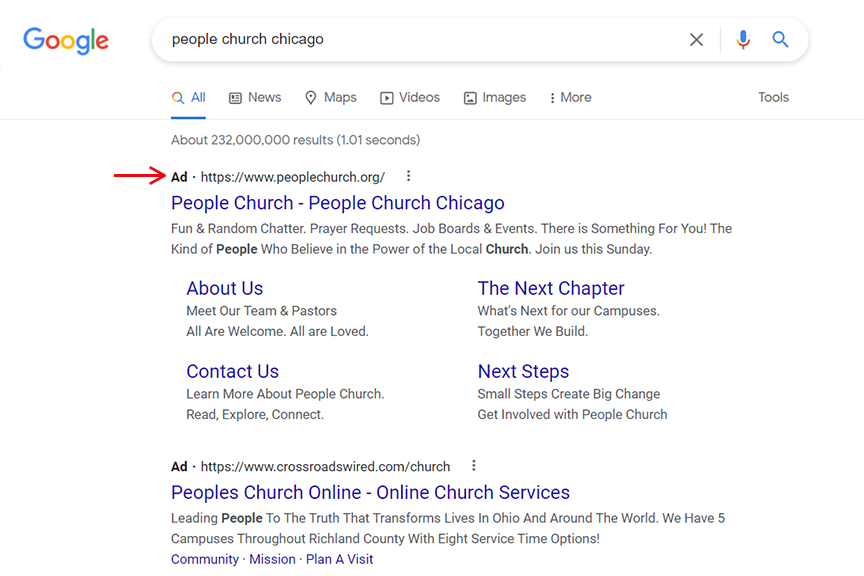It’s no secret that churches today are having to work harder to increase attendance rates – or even to keep them steady. But secret or not, the data surrounding this truth is still quite shocking. A Gallup study found that for the first time since 1937, church membership rates of adults in the U.S. have fallen below 50% – and this has not been a gradual decline. Until the late ‘90s, membership rates hovered around 70%; only recently have they begun decreasing at such a rapid pace.
This trend is highly correlated with a shift in generational values and preferences. Of surveyed adults belonging to Gen Z, 33% described themselves as religiously unaffiliated. And 66% of young adults who had once consistently attended church subsequently left after graduating high school.
However, countless other factors including a pandemic, political tension, and general disillusionment with religion are certainly at play as well.
So what does this mean for church leaders today? When both retaining and gaining church members is a challenge, an effective strategy for growth is needed. In this post, we outline some of the ways you can work to maximize your church growth strategy.
Goal Setting
The first step in successfully deploying a growth strategy is getting focused. Intentionality is key – for setting goals and metrics of success, establishing timelines, and outlining key actions. To make the most of your efforts towards church growth, begin by setting SMART goals – goals that are Specific, Measurable, Achievable, Relevant, and Time-based.
By developing SMART goals, you can ensure your team knows exactly what outcomes you’re hoping to achieve, how to know when you’ve successfully done so, and by what deadline they must be completed.
When determining your goals and plans for success, ask yourself some of these questions:
- What kind of growth is our church looking for? Generational? Ministry-specific?
- How are we planning to measure success? When will we know when we’ve done what we set out to do?
- What can we get done in the short-term? Which goals will take more time and energy?
- What are the reasonable, yet challenging, deadlines by which we hope to have each goal accomplished?
- What key actions are needed to accomplish each goal, and what impact do they have on our broader mission?
- Are there any readily-apparent opportunities or needs existing within the communities we serve?
- What are our church’s (and individual team members’) strengths?
- Can we identify any challenges that are specific to our church?
- What do we currently do well? Are there any resources already available to us?
- Do any changes need to be made on the front end to keep from hindering our progress?
If you adequately prepare yourself for the work ahead, you will set yourself up for greater success. Setting tangible, realistic goals will help keep your momentum elevated as you focus on the actions that make the most impact.
Word of Mouth
One influential resource that’s already accessible is the voice of your current members. They will likely be willing to advocate for the ministries that have positively impacted their lives.
Your church growth strategy does not need to rest solely on the shoulders of your leaders; invite every member to partner with you in this work. After all, evangelism and outreach is not the role of a select few, but of the entire Body of Christ.

However, it’s essential that you equip the members of your congregation to do what you ask of them. In order to feel comfortable inviting others to join them at church, they may need support from ministry leadership. Thus, consider offering aid in the form of promotional resources and materials, special training, and deeper discipleship programs.
- Provide marketing materials such as stickers, cards, and calendars of upcoming events. These tangible reminders of what your church offers can keep your ministries top of mind.
- Consider offering evangelism training sessions in life groups and Sunday school classes. Guide your members through the basics of witnessing to others and inviting them to walk with Christ.
- Create a culture that values both evangelism and discipleship. When members prioritize their own spiritual growth, they become more empowered to pour into others.
As you implement your growth strategy, be sensitive to the needs and desires of your congregation. By working with their strengths and supplementing their weaknesses, you prepare them to not only help increase your church attendance, but to grow the kingdom of God.
Social Media & Search Engines
One of the best ways to reach your community is to meet them where they are – and that is often online. Over 72% of those above 13 years old in the U.S. have active social media accounts, and approximately 63,000 Google searches are made every second. Thus, incorporating the power of social media and search engines in your growth strategy is key.
Social Media
Developing a social media strategy is an excellent way to augment your church growth goals. Many individuals use social media to inform their decisions, to shape their values, and to connect with others. What better place for your church to amplify its voice?

Social media can be used to identify and meet the needs of your community. Consider using your platform in the following ways:
- Act as a support system to those in your congregation by posting encouraging messages and engaging with followers.
- Raise awareness of upcoming events and ways to get involved. Give followers an inside look into the ministries they can serve by using their gifts.
- Promote spiritual resources and sermons. Run campaigns that generate excitement for an upcoming sermon series.
- Invite others to join lifegroups within your church. Post an introductory bio for each group leader, or highlight group outings.
- Offer ways to connect on social media, perhaps by live-streaming your services or by setting up a live chat to host scriptural Q&As.
In all, let your presence be informative, relevant, encouraging, and biblically-grounded. For more in-depth tips on how to choose the right social media platform for your desired audience and ministry goals, as well as content and scheduling recommendations, read our previous post, Social Media for Churches.
Search Engines
One of the first steps in a modern church-shopper’s routine is searching online. Without a meaningful online presence, you miss the chance to get in front of potential new members. But how can you stand out when there are so many options to choose from? After all, 75% of Google users will not browse any further than the very first results page.

Website Content
Firstly, it’s important to have an excellent online presence in order to be successful on search engines. Website content should be relevant, user friendly and accessible, and mobile-optimized.
In today’s increasingly virtual world, it’s undeniable that churchgoers are looking for remote options. By offering live-streamed services as well as a library of past sermons, you expand your reach to those who otherwise would not have access to your ministry. One online church guide can be summarized here:
- Select the technical equipment that best meets your church’s needs and capacity.
- Obtain a CCLI license to allow for streaming of copyrighted songs.
- Consider using Life.Church’s Church Online Platform, which offers features such as a live chat to help minister to your viewers.
- Promote your church via the social media channels you’ve chosen.
Another component of a successful online church presence is a ministry blog page. Here you can further encourage members and non-members alike by offering biblical perspectives on common issues. Topics like how to deal with anxiety and what does the Bible say about mental health? may be especially relevant. By utilizing blog writing best practices, you increase your likelihood of reaching an audience that needs to hear your voice.
The Google Ad Grant
Many factors come into play when it comes to ranking well on search engine results pages. But without an in-depth knowledge of SEO, this can be a challenging and frustrating process.
However, with tools such as the Google Ad Grant, which offers a free $10,000 grant to eligible churches and nonprofits, you can develop and maintain Google Search ads for your church. As users submit queries relevant to your website, your ads will appear above all organic search results, which can have a significant impact on your potential reach.

Organizations like Click Nonprofit will even take the ad management process off your hands, creating and maximizing your church’s ads according to industry best practices. Schedule a free consultation today and find out how you can use the Google Ad Grant to maximize your church’s growth strategy.
Partnerships
Lastly, consider partnering with established organizations, community groups, and other churches to broaden your reach and impact. As with every other component of your growth strategy, you must do this with intentionality. Seek out opportunities that connect with the mission of your church and that resonate with your congregation.
Is your church located in a community that struggles with food insecurity? Consider partnering with food banks or school lunch programs. Or maybe you have a thriving parental support ministry. This could be an opportunity to co-host a fundraising event with a local pregnancy care center. Simply keep it relevant and meaningful to your community.

By partnering with outside organizations, you’ll have access to a wider community of prospective members. You will receive valuable insight from the expertise of your partners and will gain the ability to pour into them as well. And you will give your current members the chance to live missionally and serve their community. Partnerships provide an excellent opportunity for outreach and discipleship, and can be meaningful additions to your church growth strategy.
Summary
While churches in the U.S. have suffered some blows over the decades, there is still hope for church growth today. Now more than ever, leaders must intentionally and prayerfully seek out ways to revive believers and to minister to those who don’t yet know Christ. Below, we have summarized our tips to help you do so effectively:
- Set SMART goals that are guided by your church’s mission, abilities, and calling. Take into account the specific needs of your community.
- Utilize the most powerful resource you already have – your congregation! Equip them with the skills and resources they need to be an influential part of your growth strategy.
- Develop a social media strategy. Use your online presence to uplift those in your community and get them connected to your ministry.
- Make yourself known to prospective church members online. Use the Google Ad Grant to get in front of those looking to join a church.
- Consider partnering with other organizations and creating a mutually beneficial relationship. Seek out organizations with missions and values that correspond to your own.
And above all, give your church growth strategy over to the Lord. Prayerfully commit your goals, your congregation, and your community to Him. Faithfully steward everything that He has entrusted to you, and let Him do the rest.
So then neither the one who plants nor the one who waters is anything, but God who causes the growth.
(1 Corinthians 3:7)




